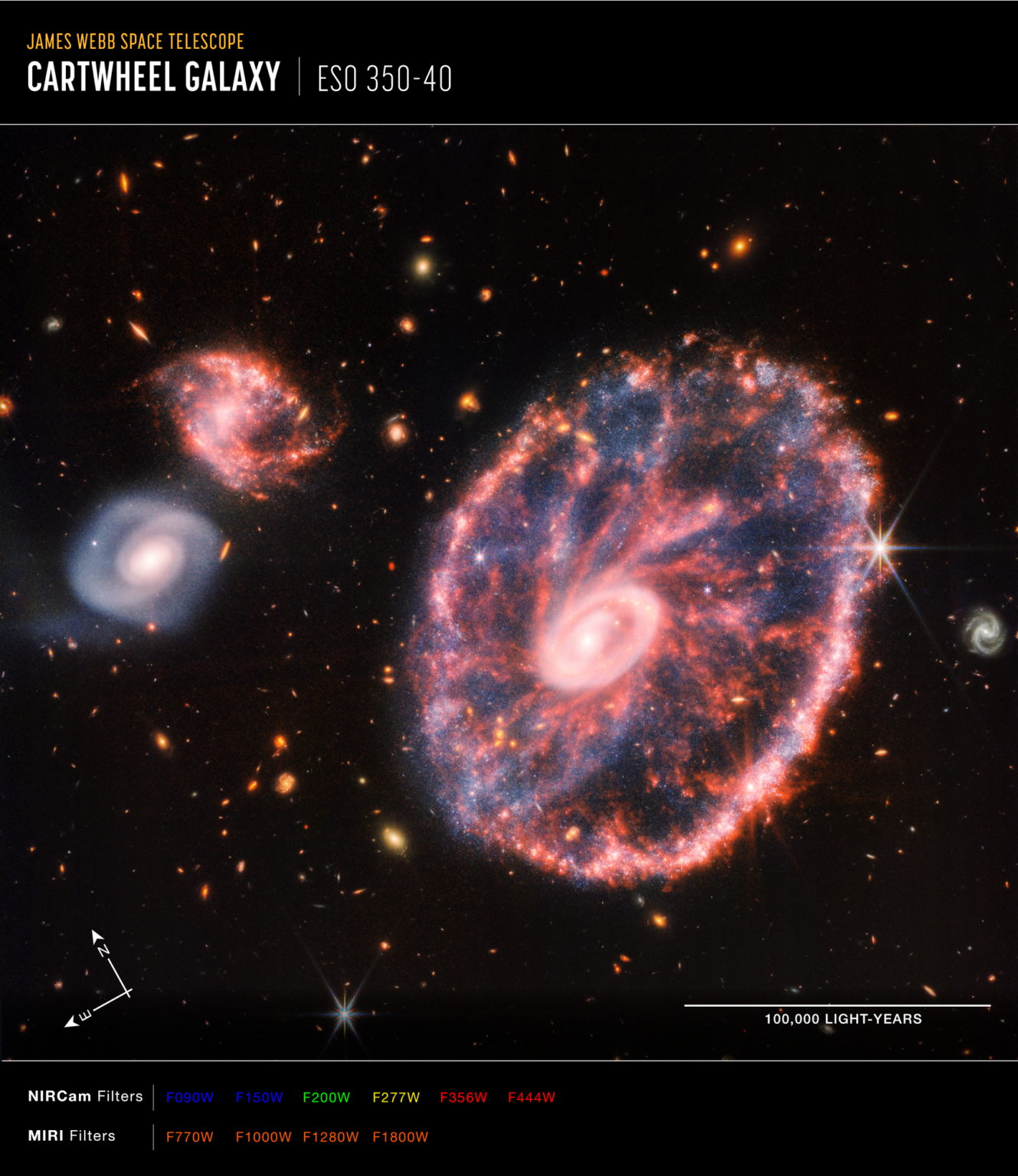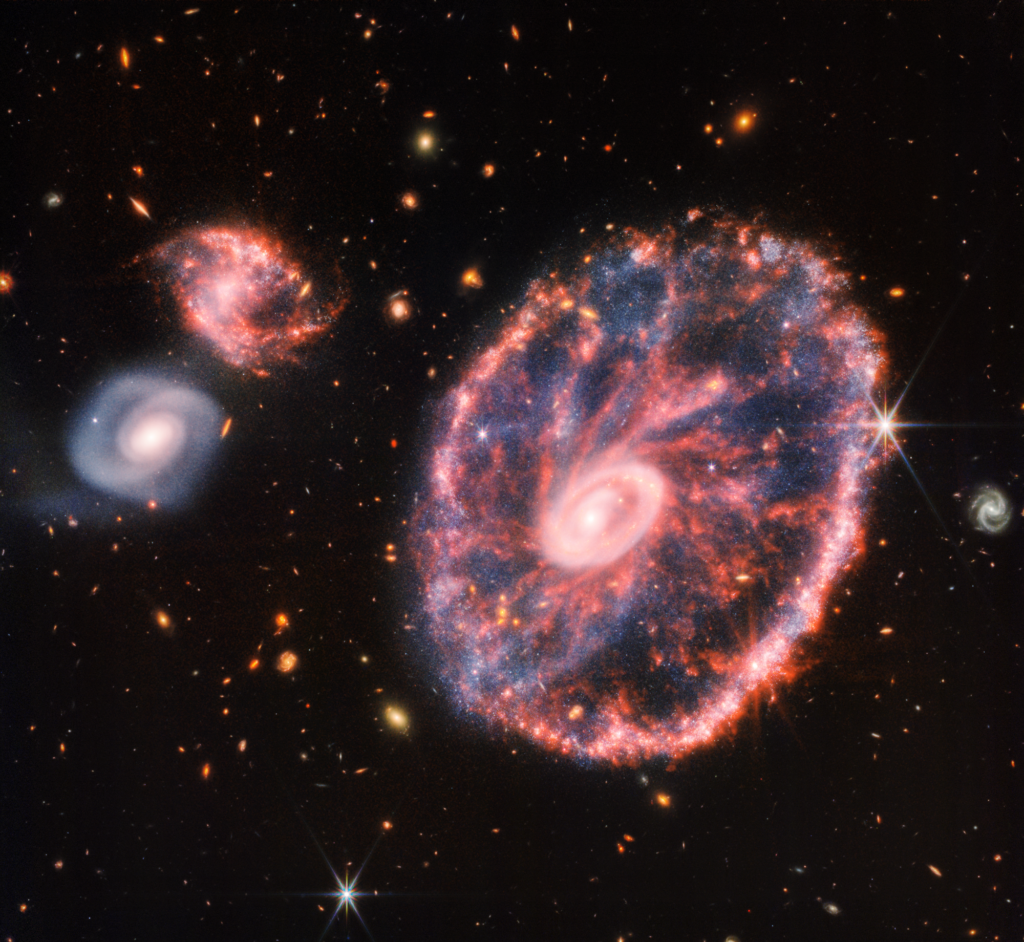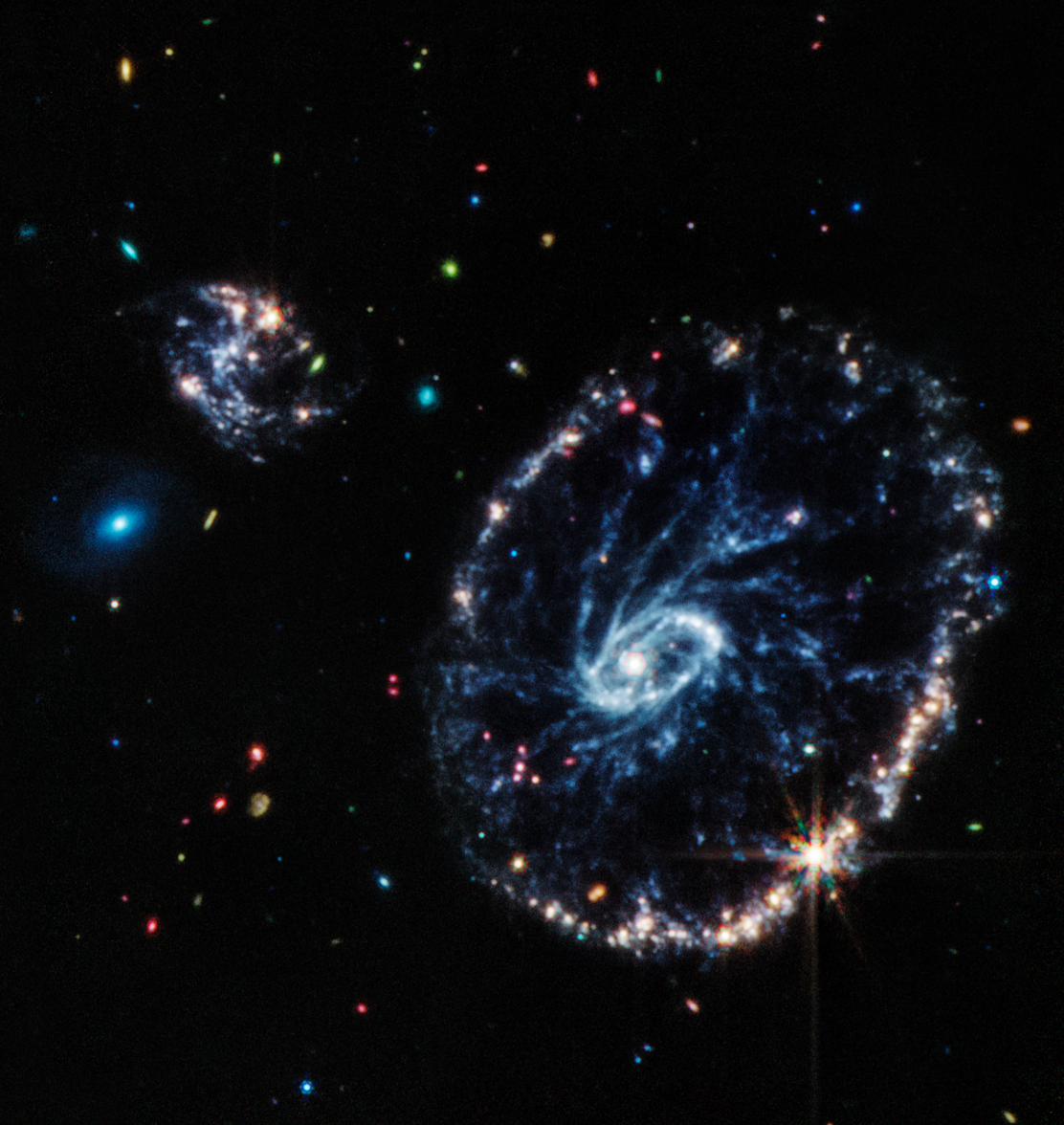NASA has released a striking image of the galaxy ESO 350-40, also known as the Cartwheel galaxy. It was obtained by the James Webb Space Telescope (JWST). The image shows previously unseen details of the processes of star formation and activity of the central black hole occurring in it.
Galactic Collision Victim
The Cartwheel galaxy is located at a distance of 500 million light-years from Earth in the direction of the constellation Sculptor. Its estimated diameter is 150 thousand light-years, which is much larger than the diameter of the disk of the Milky Way.

It is believed that in the past, the Cartwheel was an ordinary spiral galaxy that resembled ours. Then it survived a head-on collision with a companion galaxy, which forever changed its shape.
The Cartwheel Galaxy has two rings — a bright inner one as well as an outer one. They expand outward from the center of the collision like circles on the water into which a stone has fallen. This is the product of a powerful shock wave that condensed the gas and dust clouds, which led to a powerful outbreak of star formation. The inner ring contains a huge amount of hot dust and consists of billions of young stars. The outer ring has been expanding for about 440 million years. This process was accompanied by the birth of new stars and supernova outbreaks.
Other telescopes, including Hubble, have repeatedly photographed the Cartwheel. But many details of the processes taking place in it were hidden from observers by dust clouds. Fortunately, infrared radiation passes through the dust, which gave JWST the opportunity to record previously unseen details.
Cartwheel Galaxy in pictures by James Webb
In total, JWST made two portraits of the Cartwheel. The first one is composite. It is compiled from data collected by NIRCam cameras (blue, orange and yellow correspond to its data) and MIRI (red). It shows a lot of blue dots corresponding to individual stars or centers of star formation. NIRCam was also able to identify the difference between older stellar populations and dense dust in the core and younger groups of luminaries outside.

The second portrait of the Cartwheel is based on MIRI camera data. It shows a series of spiral spokes, which, in fact, are the skeleton of the galaxy. Spokes were first seen in Hubble images, but they are much more noticeable in the JWST image. They mainly consist of silicate dust. You can also pay attention to the characteristic orange glow of the outer ring of the galaxy. It is caused by the fact that the radiation of young stars ionized the surrounding hydrocarbon dust.

Earlier we talked about how James Webb found its first supernova candidate.
Follow us on Twitter to get the most interesting space news in time
https://twitter.com/ust_magazine

